Why Are Humans On The Offensive With Each Other? (5 Reasons Rage Is the New Epidemic)
Our culture is changing at breakneck speed.
One of the things that appears to be changing most rapidly is how deeply we seem to dislike each other. Election cycles and global pandemics only push this reality into warp speed.
My social channels used to be a bit more fun. Recently, it seems like my feed has been corrupted by an endless drone of suspicion-fueled anger spawning outrage and division.
It’s almost like you can’t be American without a growler full of outrage.
And why does it have to be so personal?
I’ve stopped following some (including family members) because it’s just become so nutty.
So, how did we end up this way?
Is there anything that you and I can do about it?
Well, let’s start here. Even though it might feel like everybody’s angry, let’s agree…It’s not everyone.
Like you and other thinker leaders, I’m trying to carve out space to hang with other smart and healthy people on the internet to honestly share opinions without jumping all over each other.
While that’s what I’m committed to, it’s not always that simple.
It’s Brewing IN All Of Us
The problem, of course, is more nuanced than simply blaming other people and walking away. I feel the spirit of this age increasingly brewing inside ME as well.
I’m an INFJ on the Myers-Briggs Type Indicator.
Being an INFJ means that on my good days, I want to save the world. On my bad days, under stress and pressure, there is a bad public news story waiting to happen.
I can move quickly from mild-mannered Dr. Bruce Banner to the uncontrollable green monster powered by rage when my value buttons are pushed.
As Aleksandr Solzhenitsyn wrote:
If only there were evil people somewhere insidiously committing evil deeds, and it were necessary only to separate them from the rest of us and destroy them. But the line dividing good and evil cuts through the heart of every human being.
Doesn’t that sting a little?
Why are we all a little (or a lot) irate? Is this inevitable?
There are some surprising things that fuel anger and there are more than a few reasons that rage is the new epidemic.
1. Online Accelerates Aggression
People say and do things online they aren’t comfy doing in real life. Not only do we try to manicure our image to look better, unless we work hard at it, you and I are more naturally aggressive, more divisive, and more hostile virtually than we are in person.
The question is why?
The answer? Because we’re kind of anonymous on-line.
Distance between people desensitizes people.
Military Generals have known this for millennia. Have you ever wondered why soldiers wear uniforms and war paint? It not only identifies a person, but disguises one’s humanity.
Before you judge a soldier, think of how you behave in your own vehicle. Are you more aggressive there than normal (like tailgating the slow movers in the passing lane)?
Because you’re in a 3000-pound armored automobile, you don’t see the person slowing you down as a person. Rather, you see IT as a problem. It’s very easy to get angry and aggressive with IT when they are not seen as people.
Have another think... Even in the supermarket, I’m less kind when I have a shopping cart in my hands, and I bet I’m not alone here.
The same dynamic is at work in social media and our life online.
When you’re online, the meta-machinery is becoming such an easy space to dehumanize others we don’t see as other.
Bottom line? It’s never been easier to be socially known and hidden at the same time.
2. Hate Generates More Clicks Than Love
Long before the endless fake-news arguments of today, TV news and newspaper editors figured out that bad news sells. They learned how to play into our anxiety and fear to get ratings. The 24-hour news cycle and explosion of new media have accelerated those attention-grabbing tendencies.
Social media has put that tendency on steroids. Tristan Harris makes a compelling argument that algorithms used by search engines and social media intentionally prioritize outrage, because, as Harris argues, the major social and tech companies have figured out that outrage spreads faster than anything that would be uplifting and productive.
Here’s what’s sadly true about human nature, or at least human nature in the 21st century: Hate generates more clicks than love.
I’ll admit. I personally struggle with this as a writer. I’m committed to making this blog and my platform places of inspiration, hope, and help.
But I’ve also realized that if I title things positively, not everybody reads it.
For example, I could have called this post “Love Each Other More. Our World Needs It.”
But “Why Are Humans On The Offensive With Each Other? (5 Reasons Rage Is the New Epidemic) is a much more compelling headline. I’ve experimented with titles enough to know that this phenomenon is sadly true. So, I use a little negative to generate far more positive.
When I title posts and articles, I avoid hate, outrage, and (I hope) sensationalism, but the irony isn’t lost on me that leading with a negative title means a higher likelihood that my content will be read. My typical structure is to lead with the problem most people feel or experience, describe it, and move toward a practical solution.
Hope, followed by help.
3. Any Attention Feels Better Than None
Thanks to technology, there’s an inverse trend happening around us.
We’ve never been more connected than we are today, and we’ve never felt more alone.
In 2018, the British government launched the first-ever loneliness strategy, appointing a minister for loneliness to deal with the deep isolation millions of people feel.
While this isn’t always true, sometimes lonely people will settle for any attention they can get. When you feel nothing, a click, a like or comment can make you feel something, even if it’s not nearly as satisfying as a real conversation, a real connection, or true intimacy.
Sometimes my empathy button is pushed, and I wonder if the trolls who leave me livid comments are genuinely just lonely people just hoping someone notices them.
The next time you’re hoping to get noticed online, put your device down, grab a ball, and retreat to the yard with your dog.
4. Darkness Surrounds Us
Everyone is navigating the flood of information that hits us every day.
From your social media feeds to breaking news flashes to the minute-by-minute invasion of notifications, buzzes, rings, and haptics that disrupt our day, I believe we’re processing more information than humans were intended each day.
This is not good.
I remember my grandparents sharing a newspaper subscription with the next-door neighbor (who lived a quarter of a mile from them). They were perfectly informed with the Friday edition of the weekly newspaper that came out the Wednesday prior.
Now, I have notifications that would literally ping on the minute if I did not silence them telling me up-to-the-minute news of world events, mass shootings, major weather outbreaks, celebrity breakups, and more.
Ditto with emails and status updates. You and I are bombarded every day with information we can barely process, let alone do much about.
Do you know what that’s doing to you?
It’s making you cynical.
Cynicism roots itself in knowledge. The more you and I know, the more cynical we can become. The reason we were so happy when we were younger is that you and I were kind of ignorant, right?
The world needs a character upgrade and a required class in the mature use of social media and how to critically discern news these days.
Might this explain why you feel the way you feel so many days?
5. Anger Invites An Audience, Even When They Have Nothing To Say
What’s the opposite of love? Nope, it’s not hate. It’s indifference.
And when it feels like the world is indifferent and you’re feeling unloved, anger can be a way to get someone’s attention.
Sadly, anger can get you heard, even when you have nothing to say.
So, What Do You Do?
The future can be dark, or it can be different. Personally, I’m putting my heart behind different. And I think different is potentially better.
Here are four questions to ask next time you post, write, blog, podcast, or shoot off that email or text.
- What’s my real motive? Am I trying to help, hurt, or just get noticed?
- Are people better off, or worse off, for having read what I posted?
- Am I calling out the worst in people, or attempting to call up their best?
- If the person I’m writing to was in the room looking me in the eye, would I say the same thing in the same way?
I’ve found these questions really help me filter my emotions and help me process the difference between a response and a reaction.
Speaking of which, what do you do with the junk you feel—the loneliness, the anger, the outrage?
Here’s the best thing I know how to do: Process privately. Help publicly.
Processing privately can be as simple as meditating on it and waiting 24 hours before you do a thing. Often that’s enough.
Sometimes you’ll need to talk to a friend. Other times you may need to set up a therapist appointment. I’m growing to expect the best and brightest to have regular access to professional coaching/counseling.
After all, the gravitational pull of accidental behavior is always toward unhealthy, not healthy.
Note: Critique is different from criticism. A critique aims to build others up, not to tear others down. It’s not about NOT challenging others, rather calibrating your approach to both support and challenge with a “For You” intention.
If you can’t figure out how to do that, you’re best not to post anything but cute pictures of that cool dog of yours.
Break Through The Barriers That Prevent Your Campus From Growing.
It can be discouraging to put your heart into your system and team while still seeing it plateau or, worse, decline. But that’s the reality facing many campuses leaders today.
According to one study, 94% of our public institutions aren’t growing. That means more than 9 out of 10 schools, districts, and colleges are stuck or losing ground.
Sadly, people in your community are experiencing widespread polarization and hopelessness, and they need healthy campus leaders more than ever. So, why does keeping people in your schools (much less attracting new learners) feel like such an uphill battle?
It’s time to reverse that trend through pivotal decisions with your leadership team.
Leader and Team Health are significantly connected to the overall strength of your Organization’s Performance. Accelerating Team Performance will prepare you for growth by removing obstacles in your control.
Learn how to navigate the Six Lead Measures of Organizational Health that will inject clarity and direction into your mission and help remove the barriers that stand between you and advancing your mission.
_____
P.S. Here are the two best ways I can help you right now:
1) Get your FREE guide:
5 Evidence-Based Practices to Reclaim More Team Engagement with Less Effort. www.higherperformancegroup.com/reclaim
2) Schedule a Call:
Let’s talk about the obstacles (and opportunities) that you & your team are currently facing. www.higherperformancegroup.com/schedule
More Blog Articles



